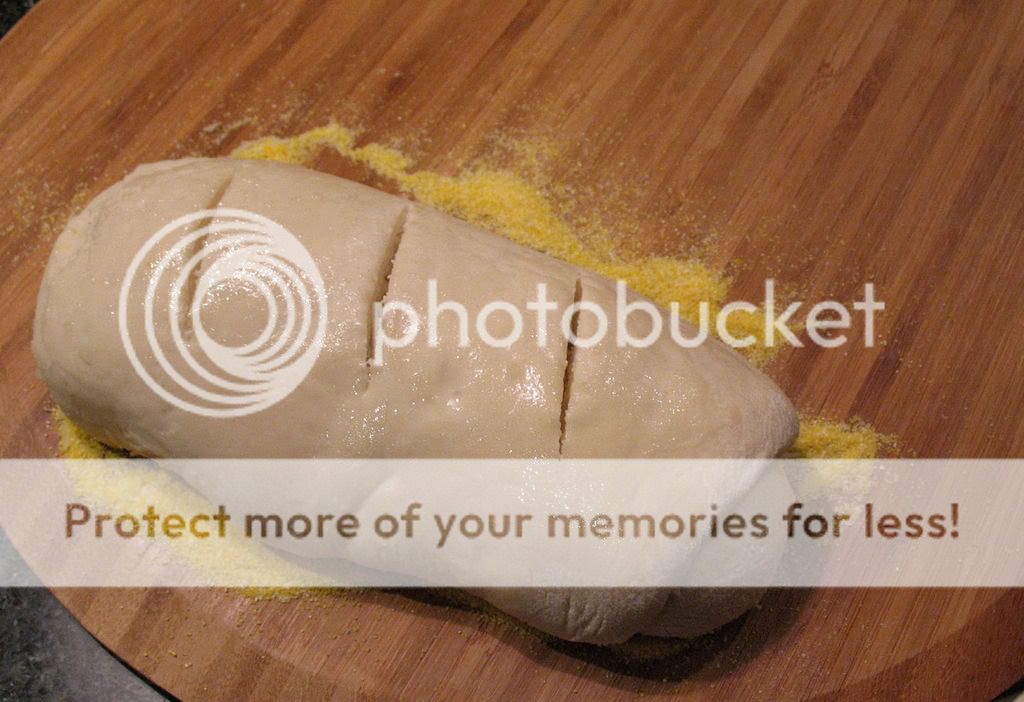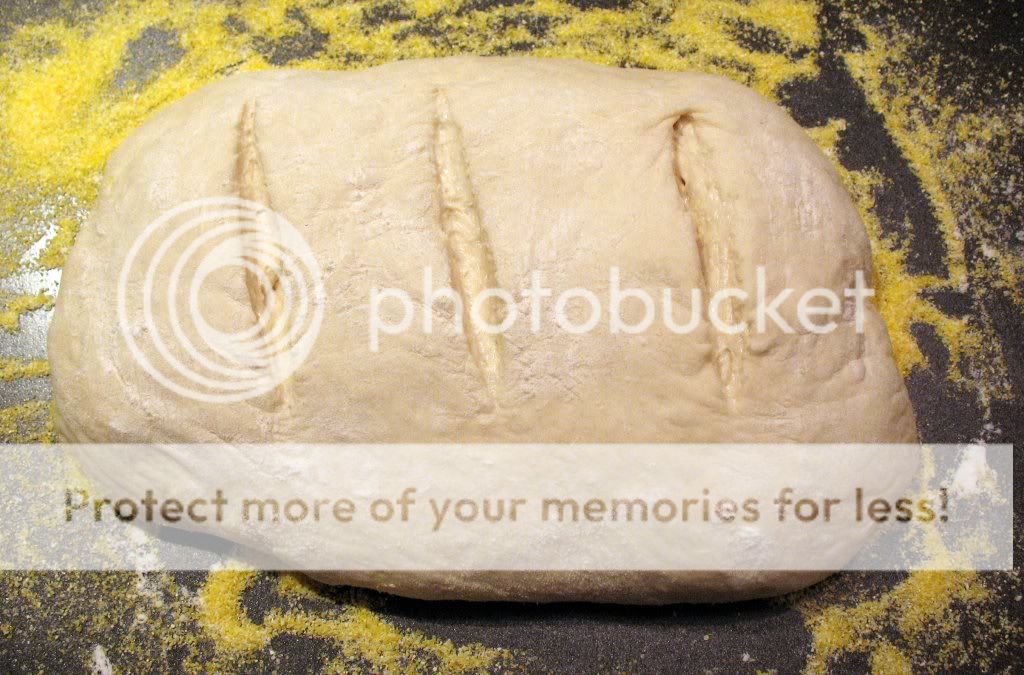No-Knead French Baguette
Thursday, April 2nd, 2009
I love thumbing through cookbooks at bookstores and libraries. While the internet is a fantastic resource for recipes and cooking information, there’s something about the actual act of reading a book that I find enjoyable. During my last trip to the library, Suzanne Dunaway’s No Need to Knead caught my eye. The idea behind this book is that it’s possible to make bakery-style bread at home with simple ingredients, basic kitchen equipment and minimal time commitment.
I decided to give the French Baguette a whirl. Since the original recipe produces two full-size baguettes, I opted to halve the recipe and make two smaller baguettes. I have included the full recipe below. I use my stand mixer to speed up the process, despite the fact that this bread can easily be prepared by hand. Most recipes, including this one, have both same-day and overnight methods. Which one you use depends on how quickly you want to bake the bread and how much time you want to dedicate to preparation. I have tried both methods and was equally pleased with each one.
Using the overnight method required minimal hands-on time. I mixed the dough on Saturday night, threw it in the refrigerator and pulled it out the following morning. A few hours later I shaped and baked the loaves. The same-day method requires more intervention, but it’s minimal. The dough is easy to handle, and it only takes a few seconds to fold the dough over on itself.
The bread is delicious! It has a slight tang to it, but isn’t as strong as sourdough. The crust is crisp and crackled, while the crumb is soft and moist. Stored in a paper bag, it keeps well for a few days.
This is my new favorite bread recipe and will be making it on a regular basis. I couldn’t believe how easy it was to make an absolutely amazing French baguette.

No-Knead French Baguettes
Yields 2 full-size loaves, or 3-4 small loaves
2 cups lukewarm water
2 tbsp active dry yeast
5 cups all=purpose or unbleached bread flour
2-3 tsp salt
Mix the Dough
1. Pour water into large bowl.
2. Sprinkle yeast onto water and stir until dissolved,
3. Add two cups of flour and stir until smooth, about two minutes.
4. Add the remaining 3 cups of flour and salt. Stir until the dough pulls away from the bowl and the flour is completely incorporated – about five minutes. If the dough is too wet, stir in an additional 1/4 to 1/2 cup of flour.
Same-Day Method
1. Cover the bowl with plastic wrap and let the dough rise until doubled in volume – about 30-40 minutes.
2. Fold the dough over on itself 3 or 4 times and let the dough rise a second time until doubled in volume.
3. Fold the dough over on itself 3 or 4 times and let the dough rise a third time until doubled in volume.
4. Proceed with the shaping instructions
Overnight Method
1. Cover bowl and refrigerate over night.
2. Remove the bowl from the refrigerator at least two hours prior to shaping. Leave it covered and allow it to rise for the second time.
3. Proceed with the shaping instructions.
Shape the Baguettes
1. Preheat the oven to 450. Place a broiler pan or baking pan on the bottom rack of the oven. Cover baking sheet with parchement paper or spray with cooking spray.
2. Turn the dough onto a lightly floured surface.
3. Divide the dough into multiple 2-4 pieces (depends how many loaves you want to make) and let it rest for 15 minutes.
4. With the palms of your hand, roll each piece into a long cylinder and place it on the baking sheet.
5. Let the loaves rise until doubled in volume – about 30 minutes.
6. Use a sharp serrated knife to cut several slashes in each loaf. Spritz with water (or smooth on with hands)
7. Place bread in preheated oven and turn temperature down to 400. Pour 1 cup of warm water into broiler pan before quickly shutting oven.
8. Bake for 30-35 minutes or until the baguettes are nicely browned.
9. Cool on wire rack before serving.


 1. Dust the surface of the refrigerated dough with flour and cut off a 1-pound piece. Dust the piece with more flour and quickly shape it into a ball by stretching the surface of the dough around the bottom on all four sides, rotating the ball a quarter turn as you go.
1. Dust the surface of the refrigerated dough with flour and cut off a 1-pound piece. Dust the piece with more flour and quickly shape it into a ball by stretching the surface of the dough around the bottom on all four sides, rotating the ball a quarter turn as you go.





